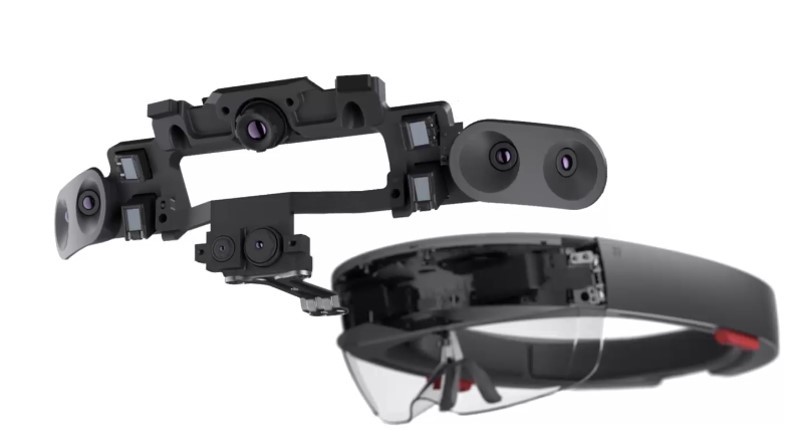
HoloLens is without doubt the next coolest product launched by Microsoft after Kinect. Before understanding the device lets quickly familiarize ourselves with the domain of Mixed reality and how it is different from Virtual and Augmented reality.
VR, AR and MR
Virtual reality, the first of the lot, is a concept of creating a virtual world about the user. This means all that the user sees or hears is simulated. The concept of virtual reality is not new to us. A simpler form of virtual reality was achieved back in 18th century using panoramic paintings and stereoscopic photo viewers. Probably the first implementation of a commercial virtual reality application was the “Link Trainer”, a flight simulator invented in the year 1929.
The 1st head mounted headset for Virtual reality was invented in the year 1960 by Morton Heilig. This invention enabled the user to be mobile, thereby introducing possibilities of better integrating with their surroundings. The result was the era of sensor packed headsets which can track movement, sense depth, heat, geographical coordinates and so on.
These head mounted devices then became capable of projecting 3D and 2D information on see- through screens. This concept of overlaying the content on the real world was termed as Augmented reality. The concept of Augmented Reality was first introduced in the year 1992 by Boeing where it was implemented to assist workers for assembling wire bundles.
The use cases around Augmented reality started strengthening over the following years. When virtual objects were projected on the real world, the possibilities of these objects interacting with the real-world objects started gaining focus. This brought in the invention of the concept called Mixed reality. Mixed reality can be portrayed as the successor of Augmented reality where the virtual objects projected in the real world are anchored to and interact with the real-world objects. HoloLens is one of the most powerful devices in the market today which can cater to Augmented and Mixed reality applications.
Birth of the HoloLens – Project Baraboo
After Windows Vista, repairing amazon forest and project Natal (popularly known as Kinect) Alex Kipman (Technical fellow, Microsoft) decided to focus his time on a machine which could not only see what a person sees but also understand his environment and project things on his line of vision. While building this device Kipman was keen on preserving the perpetual vision of the user to ensure that he or she does not feel blindfolded. He used his knowledge from his previous invention, Kinect, around depth sensing and recognizing objects.
The end product was a device with an array of cameras, microphones and other smart sensors all feeding information to a specially crafted processing module which Microsoft calls a Holographic Processing Unit (HPU). The device is capable of mapping its surroundings and understating the depth of the world in its field of vision. It can be controlled by gestures and by voice. The user’s head acts like the point device with a cursor which shines in the middle of his view port. HoloLens is also a fully functional Windows 10 computer.
The Hardware
Following are the details of the sensors built into the HoloLens:

- Inertial measurement unit (IMU) – The HoloLens IMU consists of an accelerometer, gyroscope, and a magnetometer to help track the movements of the user.
- Environment sensing cameras – The devices come with 4 environment sensing cameras used to recognize the orientation of the device and for spatial mapping
- Depth Camera – The depth camera in this device is used for finger tracking and for spatial mapping
- HD Video camera – A generic high definition camera which can be used by applications to capture video stream
- Microphones – The device is fitted with an array of 4 microphone to capture voice commands and sound from 360 degrees
- Ambient light sensor – A sensor used to capture the light intensity from the surrounding environment
The HoloLens also comes with the following two built-in processing units and storage

- Central Processing Unit – Intel Atom 1.04 GHz processor with 4 logical processors.
- Holographic Processing Unit – HoloLens Graphics processor based on Intel 8086h architecture
- High Speed memory – 2 GB RAM and 114 MB dedicated Video Memory
- Storage – 64 GB flash memory.
HoloLens supports Wi-Fi (802.11ac) and Bluetooth (4.1 LE) communication channels. The headset also comes with a 3.5 mm audio jack and a Micro USB 2.0 multi-purpose port, the device has a battery life of nearly 3 hours when fully charged.
More about the software and development tools in my next blog.
